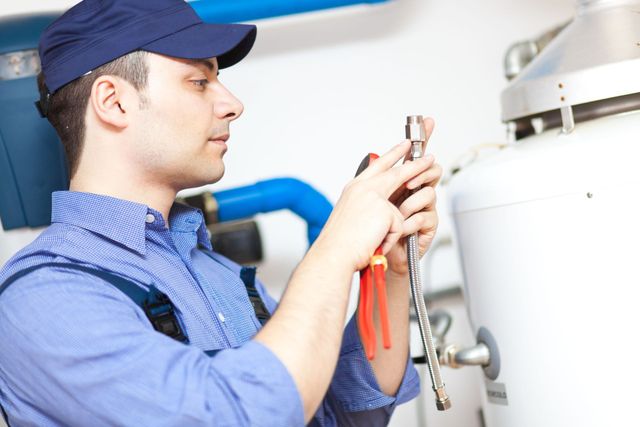Just how do you really feel in relation to How to Maintain a Hot Water Heater in a Few Simple Steps?

Warm water is vital for daily convenience, whether it's for a rejuvenating shower or washing dishes. To ensure your hot water system runs efficiently and lasts much longer, normal upkeep is vital. This article offers functional ideas and understandings on how to keep your home's warm water system to prevent interruptions and costly repair services.
Intro
Keeping your home's warm water system could appear overwhelming, yet with a couple of simple actions, you can ensure it operates efficiently for several years to come. This overview covers every little thing from recognizing your warm water system to do it yourself maintenance pointers and recognizing when to call in specialist aid.
Importance of Keeping Your Hot Water System
Regular maintenance not only prolongs the life-span of your warm water system however likewise ensures it operates effectively. Ignoring upkeep can bring about lowered performance, higher energy bills, and even premature failing of the system.
Signs Your Warm Water System Needs Maintenance
Recognizing when your hot water system needs attention can protect against significant problems. Keep an eye out for indications such as inconsistent water temperature level, strange sounds from the heater, or rustic water.
Flushing the Water Heater
Purging your hot water heater gets rid of sediment buildup, boosting efficiency and extending its life.
Checking and Replacing Anode Rods
Anode poles avoid deterioration inside the tank. Checking and changing them when broken is essential.
Facility Problems Needing Professional Help
Instances consist of major leakages, electric troubles, or if your water heater is continually underperforming.
Routine Expert Maintenance Conveniences
Expert upkeep can consist of complete inspections, tune-ups, and making sure conformity with safety and security criteria.
Examining and Readjusting Temperature Setups
Adjusting the temperature level settings makes sure optimum performance and safety.
DIY Tips for Upkeep
You can carry out a number of maintenance jobs yourself to keep your warm water system in leading condition.
Checking for Leaks
Regularly evaluate pipelines and links for leakages, as these can lead to water damage and higher expenses.
Recognizing Your Warm Water System
Before diving right into maintenance tasks, it's useful to comprehend the standard parts of your warm water system. Normally, this consists of the water heater itself, pipelines, anode rods, and temperature level controls.
Regular Monthly Maintenance Tasks
Regular monthly checks can aid capture minor problems before they escalate.
Examining Stress Relief Valves
Examining the pressure safety valve guarantees it works appropriately and avoids extreme stress buildup.
Shielding Pipes
Protecting warm water pipes minimizes warm loss and can conserve energy.
When to Call an Expert
While do it yourself maintenance is helpful, some issues need expert proficiency.
Final thought
Normal maintenance of your home's hot water system is necessary for efficiency, durability, and cost financial savings. By adhering to these tips and understanding when to look for specialist help, you can guarantee a reputable supply of warm water without unanticipated disruptions.
How to Maintain an Instant Hot Water Heater
Before tinkering with your hot water heater, make sure that it’s not powered on. You also have to turn off the main circuit breaker and shut off the main gas line to prevent accidents. Also turn off the water valves connected to your unit to prevent water from flowing into and out of the appliance. 2. When you’re done, you have to detach the purge valves’ caps. These look like the letter “T†and are situated on either side of the water valves. Doing so will release any pressure that has accumulated inside the valves while at the same time avoid hot water from shooting out and burning your skin. 3. When the purge valves’ caps are removed, you have to connect your hosing lines to the valves. Your unit should have come with three hoses but if it didn’t, you can purchase these things from any hardware or home repair shops. You can also get them from retail stores that sell water heating systems. Read the user’s manual and follow it to complete this task properly. When the hosing lines are connected, open the purge port’s valves. 4. You should never use harsh chemical cleaners or solutions when cleaning your unit. Make use of white vinegar instead. It should be undiluted and you’ll probably use about 2 gallons. 5. Now flush your water heater. This task should probably take about 40 minutes. We can’t give you specific directions for this because the procedure is carried out depending on the type, model and brand of your heater. With that being said, refer to the user’s manual. 6. When you’re done draining the unit, you have to turn off the purge port valves again. Remove the hosing lines that you earlier installed on each of the water valves. Put the valve caps (purge port) back in their respective places and be very careful so as not to damage the rubber discs that are found inside these caps. 7. Now that everything’s back in place, check your user’s manual again to find out how to reactivate your water heating system. 8. Once it is working, turn one of your hot water faucets on just to let air pass through the heater’s water supply pipes. Leave the tap on until water flows smoothly out of it. https://www.orrplumbing.com/blog/2014/september/how-to-maintain-an-instant-hot-water-heater/

As a serious reader about Tips on Maintaining a Water Heater, I imagined sharing that excerpt was worth the trouble. I beg you take a moment to promote this content if you enjoyed reading it. Thanks a lot for taking the time to read it.
Get Offer